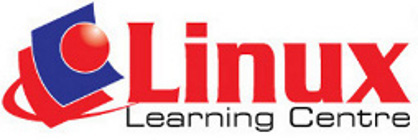Module Goals
Using
databases
requires
the
candidate to understand the concept of database
and demostrate competence in using a database.
The candidate shall be able to:
- Understand what a database is and how it is
organized and
operated.
- Create simple database and view the database content
in
various modes.
- Create a table, define and modify fields and their
properties; enter and edit data in a table.
- Sort and filter a table or form; create, modify, and
run
queries to retrieve specific information from a database.
- Understand what a form is and create a form to
enter,
modify and delete records and data in records.
- Create
routine reports and prepare outputs ready for
distribution.
Course
Outline
1.
Understanding Databases
- Key
Concepts
- Understand what a database is.
- Understand the difference between data and
information.
- Understand how database is organized in terms of
tables,
records and fields.
- Know some of the common uses of large-scale
databases
like: airline booking system, government records, bank account records,
hospital patient details.
- Database
Organization
- Understand that each table in a database should
contain
data related to a single subject type.
- Understand that each field in a table should
contain only
one element of data.
- Understand that field content is associated with
an
appropriate data type like: text, date/time, yes/no.
- Understand that fields have associated field
properties
like: field size, format, default value.
- Understand what primary key is.
- Understand what an index is. Understand how it
allows for
faster data access.
- Relationships
- Understand that the main purpose of relating
tables in a
database is to minimize duplication of data.
- Understand that a relationship is built by
matching a
unique field in one table with a field in another table.
- Understand the importance of maintaining the
integrity of
relationship between tables.
- Operation
- Know that professional databases are designed and
created
by database specialists.
- Know that data entry , data maintenance and
information retrieval are carried out by users.
- Know that a database administrator provides access
to
specific data for appropriate users.
- Know that a database administrator is responsible
for
recovery of a database after a crash or major errors.
2. Using the
Application
- Working
with
Databases
- Open, close a database application
- Open, close a database.
- Create a new database and save to a location on a
drive.
- Display, hide built-in toolbars, Restore, minimize
the
ribbon.
- Use available Help functions.
- Common
Tasks
- Open, save and close a table, query, form, report.
- Switch between view modes in a table, query, form,
report.
- Delete a table, query, form, report.
- Navigate between records in a table, query, form.
- Sort records in a table, form, query output in
ascending,
descending, numeric, alphabetic order.
|
3.
Tables
o
Add, delete
records in a table.
o Add, modify,
delete data in a record.
o
Create and
name a table and specify fields with their data types like: text,
number, date/time, yes/no.
o Apply field
property setting: field size, number format, date/time format, default
value.
o Create a
validation rule for number, date/time, currency.
o Understand
consequences of changing data types, field properties in a table.
o Set a field as
a primaery key.
o Index a field
(with, without duplicates allowed)
o Add a field to
an existing table.
o Change width
of columns in a table.
4. Retrieving
Information
- Main
Operations
- Use the search command for a specific word, numbr,
date
in a field.
- Apply a filter to a table, form.
- Remove the application of a filter from a table,
form.
- Queries
- Understand that a query is used to extract and
analyse
data.
- Create a named single table query using specific
search
criteria.
- Add criteria to a query using one or more of the
following operators: =(Equal), <>(Not equal to), <(Less than),
<=(less than or equal to), >(greater than), >=(greater than or
equal to)
- Add a criteria to a query using one or more of the
following logical operators: AND, OR, NOT.
- Use a wildcard in a query, * or %, ? or ___
- Edit a query: add, remove, modify criteria.
- Edit a query: add, remove, move, hide, unhide
fields.
- Run a query.
5. Objects
- Forms
- Understand that a form is used to display and
maintain
records.
- Create and name a form
- Use a form to insert new records.
- Use a form to delete records.
- Use a form to add, modify, delete data in a record.
- Add, modify text in headers, footers in a form.
6. Outputs
- Reports,
Data
Export
- Understand that a report is used to print selected
information from a table or a query.
- Create and name a report based on a table, query.
- Change arrangement of data fields and headings
within a
report layout.
- Present specific fields in a grouped report by
sum,
minimum, maximum, average, count, at appropriate break points.
- Export a table, query output in spreadsheet,
text(.txt,
.csv), xml format to a location on a drive.
- Printing
- Change the orientation (potrait, landscape) of a
table,
form, query output, report. Change paper size.
- Print a page, selected resord(s), complete table.
- Print all records using form layout, specific
pages using
form layout.
- Print the result of a query.
- Print specific page(s) in a report, print
complete
report.
|






